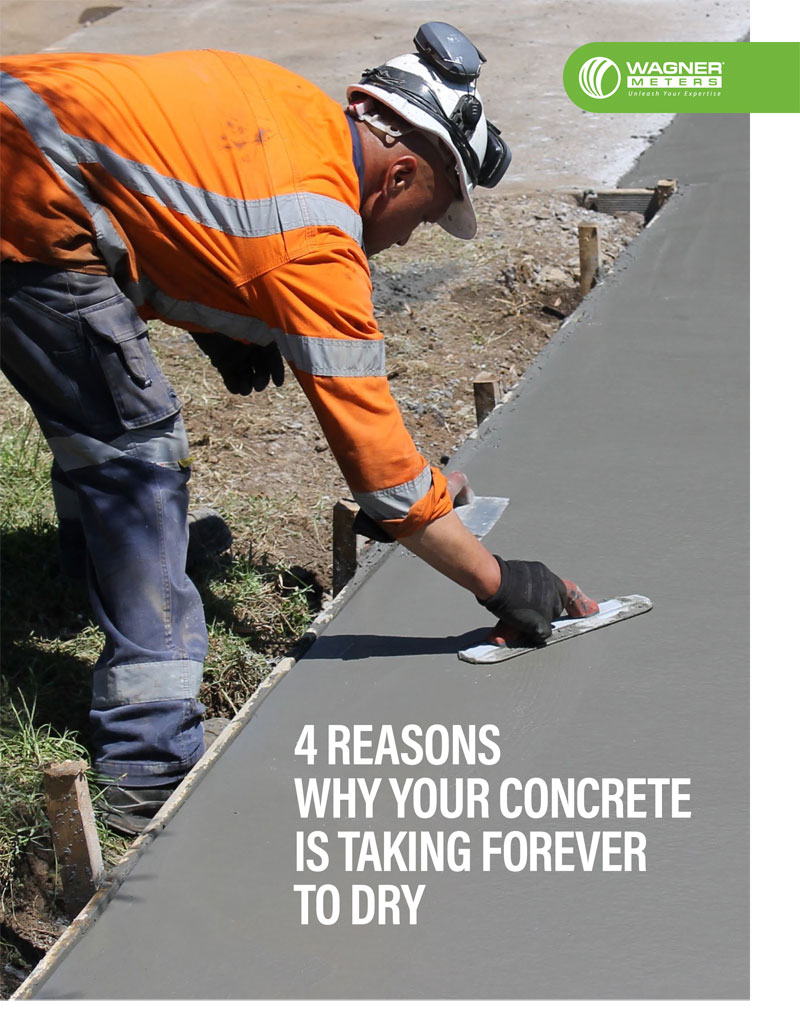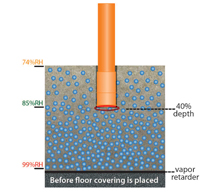How to Prepare a Concrete Floor for Coatings
Concrete Floor Preparation
Believe it or not, when it comes to applying coatings to a concrete floor slab, it’s not enough just to cast your eyes on the surface – and if it looks dry – think that it’s ready.
To avoid the costly problems that can happen after installing coatings, there are two crucial steps you must take:
1. Correct concrete floor prep before applying any kind of industry-appropriate coating.
2. Ensure you measure the moisture condition inside the concrete slab before the application begins.
First, we’ll look at ways to prepare the concrete surface. Did you know that nearly 80 percent of coatings fail because the concrete floor surface preparation was incorrect?
Clean the Floor Before You Coat
Coatings that bond well to concrete include epoxies, polyurethanes, acrylics, and stains.
Clean and Fill Holes with Concrete Repair Material that Suits the Job
For instance, using concrete or a high-bonding polymer will depend on whether you’re covering a crack or trying to bond it. It’s also important that your bonding material has very low shrinkage, or it will not bond correctly, and the repair will fail.
Check for Oil, Grease, and Other Chemicals
Dark spots are often an indicator of grease. You can perform a water bead test. If the water beads, you know the floor has been contaminated. To clean the surface, use a heavy-duty concrete degreaser and a stiff bristle brush or floor scrubber.
Acid etching
Acid etching is required if a concrete floor is to be painted, for example. First, run your hand over the surface. If it feels smooth, you’ll need to deploy acid etching. Muriatic acid is most commonly used. The water/acid concentration will depend on how wet the surface is and what coating you’ll be using. Pressure washing and blast cleaning are other ways to clean the concrete, depending on what coating is to be applied.

Free Download – 4 Reasons Why Your Concrete Is Taking Forever to Dry
Measuring Moisture – The View from Within
Next, look at moisture testing, one of the most important considerations when working with concrete.
Why would you need to measure moisture from the inside before applying a coating? Because the slab will exhibit a moisture gradient in which the top will be drier than the bottom.
Research has clearly shown that understanding the slab’s true moisture condition requires an assessment of the moisture inside the concrete.
Apply an epoxy coating too soon before excess moisture inside the concrete has had sufficient opportunity to be released. You risk peeling, blistering, de-bonding, and other unsightly and expensive issues.
Taking readings of moisture at the surface, for instance, by using a calcium chloride test, only provides information about the top one-inch layer of the concrete. This layer is particularly vulnerable to ambient temperature and the room’s relative humidity (RH).
 The only way to know for sure the true moisture condition of the concrete is to insert a relative humidity (RH) probe to a depth of 40 percent for a slab drying from one side.
The only way to know for sure the true moisture condition of the concrete is to insert a relative humidity (RH) probe to a depth of 40 percent for a slab drying from one side.
The Rapid RH® Smart Sensor meets the ASTM (American Society for Testing and Materials) F2170 standard for RH testing, which is a long-standing, scientifically-proven method.
The RH test will confirm exactly how much moisture the coating or other surface treatment will “see” once the concrete slab has been sealed. Measurements using the in-situ RH method are fast, economical, and accurate. They are shown to be the most reliable way to determine the right time to apply a surface coating successfully.
Jason has 20+ years’ experience in sales and sales management in a spectrum of industries and has successfully launched a variety of products to the market, including the original Rapid RH® concrete moisture tests. He currently works with Wagner Meters as our Rapid RH® product sales manager.
Related Posts via Taxonomies
Last updated on January 13th, 2023




Awesome write-up! Some great tips. Its incredible how many people fail to measure the moisture condition inside concrete slabs before they begin the process. Appreciate your insights.
Cheers,
Danny
I’m glad you mentioned that before having a concrete coating added to your floor, you should clean the surface and fill in the holes. I think it’s so important to ensure that your floors are prepared for the new coating that will be added, so that it lasts as long as possible. My husband and I are considering having a concrete coating service done to our driveway and garage. We’ll have to find a concrete contractor in our area that can help us ensure that our surfaces are prepared enough to add this protective finishing.
What concrete products do you recommef?
Melanie:
Thanks for the question. Portland cement is great.
Thanks,
Jason
That’s a very informative article. Great and amazing tips you have shared. I am glad that I came across such an article. It’s really important to prepare a proper base for coating, especially for concrete floors. Thanks for the tips.
Our advice has always been the same; if you’re not 100% sure, consult an expert. If you think you can do it yourself, follow great articles like this one.
Great tips! These are so important in preparing the floor properly!
I never considered blasting as a way to clean concrete. I imagine that this would give a nice clean finish and smooth it all out. I’ll have to consider your tips if I ever need to clean concrete.
Your tip to locate holes or cracks and filling or repairing it with the appropriate material before coating makes a lot of sense. I would imagine that buying some sort of tool to measure the crack would also help you out, as it would inform you as to the severity of the problem. Small or very shallow cracks would most likely pose less of a threat to the operation than a deep or long one.